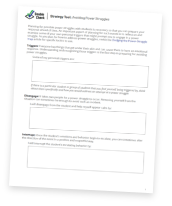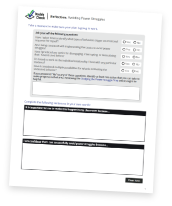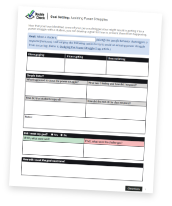Strategy: Avoiding Power Struggles
Check-Up Menu > Avoiding Power Struggles
How To
The best way to avoid a power struggle is to never get into one with a student. Even the most well-intentioned teachers can find themselves getting into a power struggle with a student over minor incidences. Once you do find yourself in a power struggle with a student, getting out of it quickly and calmly is most desirable. After experiencing a power struggle with a student, self-reflection is key to helping to avoid a reoccurrence of such events in the future

Reflection

Goal Setting

Use the following form to set your goals to avoid power struggles.
References to Other Relevant Resources:
Dodging the power-struggle trap: Ideas for teachers. (n.d.). Retrieved October 12, 2020, from https://www.interventioncentral.org/behavioral-interventions/challenging-students/dodging-power-struggle-trap-ideas-teachers